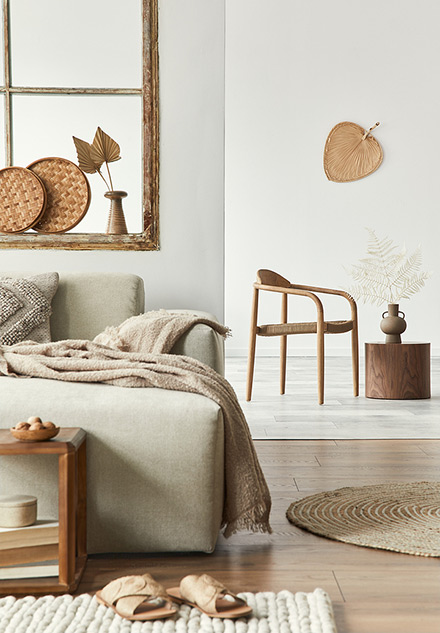Interior design styles to be considered

Minimalist, industrial, bohemian... there are many styles to consider when you're looking to update your home. We find that many of our clients struggle to define their interior design style due to a lack of understanding of design concepts. With so many unique styles to choose from, the idea of selecting your preferred look can be quite daunting. Some homeowners even like to combine elements of two or more styles to create a unique interior.
If you are struggling a little with where to start on an interior design project, this article will teach you about some popular styles and what characterises them.
Contemporary
This is a fluid style that's often confused with 'modern' style. Its characteristics are always evolving, and the Australian interpretation differs from, say, the American one.
Currently, our contemporary style involves large, abstract artwork, textured décor, panelled feature walls and considered colour choices in muted tones. Things like woven baskets and hand-thrown ceramics are popular, and connecting the indoors with the outdoors is a fundamental theme. We're also seeing an increasing emphasis on curves and arches, as opposed to sharp lines.
Bohemian
Fast becoming one of the most popular interior design choices, this style celebrates culture with unique artworks. A neutral colour palette is important, brought to life with distinct textures like rattan, jute, knotted wool and cane. Indoor plants are also important.
Things like worn furniture and hanging chairs often appear, taking the Bohemian style away from the hippy look to allow room for more luxe items. There is no defining colour palette, but we are seeing moodier choices with dark-coloured feature walls; a far cry from bright, all-white spaces that have long been in style.
Minimalist
As you might guess, this is all about keeping it simple. The 'less is more' principle applies to furniture shape and style, as well as colour choices and decorating. It borrows from both modern and Scandinavian styles, stripping them back without making a space appear too sterile. The aim is serenity.
The minimalist style is defined by monochrome colour palettes with occasional accent colours. Nothing should be placed without a specific purpose, as function and form are essential. Lighting is a fundamental consideration, with floor lamps compensating for a lack of natural light in certain spaces.
Industrial
This is all about exposing the raw elements of a building for an edgy style. It champions the bones of a building, revealing beams, bricks and pipework in a considered way.
Spaces are filled with sparse, functional furniture, along with metal light fixtures and, perhaps, some large photographic artwork. Colour palettes are typically muted, with room for experimentation with textures and materials, like combining metal and leather. The industrial style is currently experiencing a new wave and is more luxurious than its early-2000s predecessor.
Luxe
This style suggests opulence with bold use of colours and patterns. Spaces are layered intricately and decorated with high-end furniture and fixings. The look tends to feature large mirrors, patterned textiles and architectural lighting, with lots of custom-made items.
There may be hints of gold or brass to add sophistication. Natural stone, designer wallpaper and luxurious furs all tend to make an appearance.
Style is king
We hope this guide has shed some light on a few of the most popular interior design styles. Other looks to explore include:
- Modern
- Eclectic
- Scandinavian
- Provincial
- Coastal
Remember that you can also try a fusion of two or more styles to get the look you want. If you feel you still need help with choosing your style, please don't hesitate to contact Jarvis Interiors and we'll discuss your vision with you.
